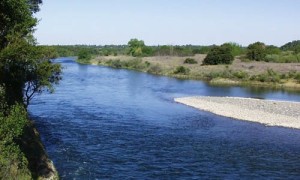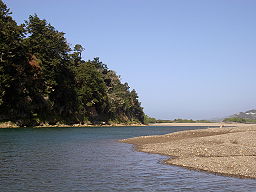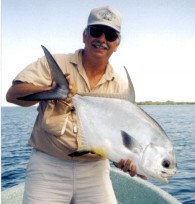Location
The American River starts at the top of the west slope of the Sierras heading down through the foothills into Folsom Lake and then Lake Natomas. The 23-mile stretch of river that is called the Lower American then flows out of Nimbus Dam, heading west to the confluence with the Sacramento River in downtown Sacramento. The location, size and accessibility of this river make it a popular destination for many valley and bay area residents.
Access
The access to this stretch is very good with a bicycle and footpath running it’s entire length. There are many car accesses and some boat launching sites as well. Today, we see more drift boats and other small fishing craft floating the many secluded miles of river. The speed limit for motorized watercraft is 5 mph, which helps keep the river a more peaceful place. The river is famous as multi-use water way with boating, rafting, kayaking, hiking, jogging, bicycling, swimming, bird watching and picnicking as just a few of the many uses of the American River Parkway. See Lower American River map or stop by the shop and we can point you in the right direction.
Flows
The flows can vary dramatically in this stretch of river depending on the snow pack each winter. Some years it will flow well over 5,000 cfs all spring and we will miss the early Half-Pounder Steelhead run and the Shad run all together. We think that 2,000 cfs is a perfect flow for fly-fishing the river. Flows below 1,500 cfs for any length of time will cause the fish to get pretty spooky. Over 3,000 cfs can be a little harder to wade, but still OK. Flows over 5,000 cfs are very dangerous with some drownings every season.
Tackle
We feel that a #5-6 and #7-8 outfit will handle most species of fish that you will encounter on the river. A full weight forward floating line is a must for both. Then a couple of sinking lines in different sink rates will round out your arsenal. We use shooting head systems as well as sink tip lines in various sizes. Two handed fly rods, Spey and Switch, are becoming very popular for fishing this larger river.
Wading
This is a serious issue in fishing this size of river. Don’t go out alone and don’t go in deeper than you feel comfortable. A good pair of breathable stocking foot chest waders with studded sole wading boots is a must. Be sure to use a belt around your waste over your waders to keep out the water if you slip and fall. A safety floatation devise is a good idea as well. Some will also find a wadding staff to be a handy tool.
Species
The main species that are targeted by fly fishers are all migratory, which include the American Shad, Steelhead, Stripped Bass and King Salmon. At this time in the history of the river there are normally good fishable numbers of these fish at their specific timing. Learning when, where and how to fly fish for each of these species is the first step in enjoying this great piece of water.
Steelhead
Steelhead, sea run Rainbow trout, come in two size groups in our river; smaller (12-20″) fish called ‘Halfpounders’ and larger (5-15#) adult winter run Steelhead. We have the ‘Half-pounder’ runs in the spring and fall. The spring run fish are smaller, averaging around 14”. This run can be good if we don’t have high water in March/April. They can ‘key in’ on the afternoon/evening caddis emergences in the upper reaches of the lower American River. This is from River Bend/Goethe Park upstream to Sailor Bar. Trout tactics are best for these red hot little torpedoes.
The fall run fish average 16” long, but can get up to 22” with some regularity. Some larger 5 to 7 pound fish get caught on occasion. Sept/Oct is prime time for fall fish with AM and PM being the best time to find them most active. We fish for them with #5, 6 and 7 weight outfits. Many methods can be effective for them, but trout tactics are usually the best. We use smaller wet flies and nymphs with caddis patterns being very popular. Later in the fall as the salmon start to spawn, we use egg imitations. These fish will be taken on caddis dries in the PM in the fall. These fall fish seem to hang around the lower reaches of the lower American from the Paradise Beach area upstream to River Bend/Goethe Park. They seem to be in the river all winter as well. In January and February they can be caught on salmon fry imitations.
Our winter run Steelhead run 6 to 12 pounds and can reach 20!! After the river was dammed, our Nimbus hatchery introduced the Eel River strain of steelhead to the river. Before the dams, our native steelhead were much smaller fish kind of like the Klamath River fish. The big steelhead normally start coming into the river in early December. We like to use #6, 7 and 8 weight sink tip lines and weighted steelhead patterns for them. Again, they are fished for with many different methods. Indicator fishing with egg imitations is very popular too. In the fall, the upper stretch of the Lower American, from Ancil Hoffman Park upstream to the Hazel Avenue Bridge, is closed for salmon spawning. Many of these large fish are hold up in this area. When the river opens around the first of the year, we traditionally go after these bigger fish. Be sure to check the DF&G regulations before fishing the Lower American River. The prime time for winter run fish is December through March. The first two weeks of February can be a great time depending on the weather. Many are using two-handed fly rods, Spey and Switch, now for winter Steelhead in our river. Mostly with sink-tip lines and longer wet Steelhead flies with action.
King Salmon
The King or Chinook salmon is native to the river, but after the dams were built, they have been sustained with the Nimbus Fish Hatchery. The entire Sacramento River drainage has had great runs of salmon for the last 5 years or more. We have been catching them on flies with great success for many years. Special bright colored pattern and egg imitations are best with a strong tippet and heavy wire hook. October is the top month, but some are here in September and even earlier. Wading is very effective, but a small boat would be of some advantage at times. We use #8, 9 and 10 weight outfits with sinking lines for these large powerful fish. They run 10 to 20 pounds, but fish way over 30 are not uncommon. AM and PM is the best time, but many are caught in mid-day. These are the strongest fighting fish we have in the river. They take a long time to land, so larger rods are very popular. Runs have been up and down for these fish over the past decade.
Striped Bass
We have Striped Bass in the river year round. They were introduced into the Sacramento River drainage in 1877 along with the American Shad from our friends on the east coast on the US. The summer months are usually the best for catching them on flies. We have schools of smaller fish appropriately called ’Schoolies’ that run 3 to 6 pounds. We also have a good population of fish that run 15 to 20 pound, but you have to work pretty hard for them. We have also some fish from 30 to 60 pounds that are seldom hooked and if so seldom landed. By floating the river in the daytime with polarized glasses, these 30-pound plus monsters can be seen. People snorkeling the American River also see these big monsters. They have been landed by our staff to 40 pounds on flies but the largest fish in recent years was landed on a plug rod and weighed in at 53 pounds.
We use #7, 8, and 9 weight outfits with fast sinking shooting heads to get the flies down in the river. The most popular patterns are locally tied, large streamers that look like juvenile steelhead. We get some spring spawners into the lower stretches of the river in March/April, but the warmer months like July through September are the prime time. They seem to be in the entire river, but in late summer, they seem to move up stream for cooler water. We like to start fishing at ‘Dark Thirty AM’ but many fish have been take in the middle of the day. Quietly free floating in a boat and casting to structure and current seams is the best method. Casting skills are an issue here.
American Shad
The American Shad is a great game fish that readily takes a fly. They are in the Herring family and run from 1 to 5 pounds and larger. They can be caught from an anchored boat or by wading. This is one of our most popular fisheries, which starts in May and is peaking in June. Actually, they are in the river for quite a while, but many anglers move on to the other fisheries like trout in the summer months. Shad are taken in the upper reaches of this section of river in September by anglers fishing dry flies for fall Half Pounder Steelhead. We use anything from a #6 weight to a #8 weight outfit depending on the flows. Sinking lines are needed to get to the level on these fish which hang in the deeper, faster runs in large schools like salmon. Locally developed bright colored flies in combinations of white, pink, yellow, red, orange and chartreuse are very effective. Bead chain eyes or dumbbell eyes are added to the flies to turn them over so the shad can be hooked in the upper part of the mouth. Their lower jaw is paper-thin and is easily torn. Nickel and gold plated hooks are pretty standard if you can find them. Shad flies run from size #8 to #12 depending on the flows each season. AM and PM is the favorite time for Shad, but they can be caught all day. Adding a jigging motion to the fly is can help to entice the Shad to strike. They seem to holding deeper in mid-day, but do come up near the surface early and late in the day. Two handed fly rods, Spey and Switch, are getting very popular for fishing for Shad today. Shad patterns have been getting smaller and sparcer lately. Local Shad Commando Jeff Ching has developed the top fly now, the “Bloody Maria”.
Recommendation
I have been outfitting anglers for the American River fisheries for over 40 years and things have not changed that much. Amazingly, we still have good numbers of fish in all species and we also have very good access. The fishing seems to be very good at this time, but that might be attributed to the quality of the local fly fishers. We have seminars on fishing for all species throughout the year and we also have guides with boats on the river to help people learn about these fisheries. With all the information available today, you should be able to be at the right time, right place, with the right tackle and good techniques to catch some of these great fish.
*Going at prime time for a species with a good fly fishing guide/instructor is the fast tact to learning how to fly fish the river. There are usually affordable group classes for these fisheries as well.
Catch & Release Please
We recommend pinching down the barbs on all your flies for safety. Another reason is that it is easier on the flies and the fish. If we all try to release these fish, we can insure that they will be here for many years to come. We recommend a camera for saving the great moments. It is also questionable whether or not these fish are healthy to eat?
Go to our Kiene’s American Message Board for more info on the Lower American River.
Here is a link to our Kiene’s American Guides for the Lower American River.



